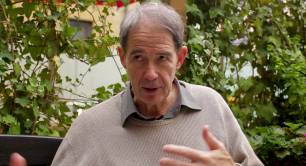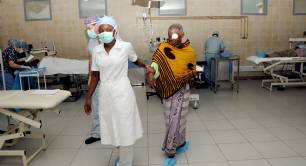How social enterprise is helping post-earthquake Christchurch regenerate
What sort of society do we want to live in? The earthquake that hit Christchurch in New Zealand in 2011 was devastating, but it presented an opportunity to rebuild a city fit for the future - and social enterprise is playing a leading role.
How do you rebuild a city when 1,500 buildings have been destroyed?
The earthquakes that hit Christchurch in New Zealand in 2011 had tragic consequences but, once the dust had cleared and the pragmatic work of clearing up started, they also presented an opportunity.
As Anake Goodall describes it, the regeneration committee had a “blank canvas” to build a city for the future.
The Social Enterprise World Forum (SEWF), which takes place in Christchurch in September, sees regeneration of the city as a metaphor for the questions social enterprise asks: what sort of society do we want to live in?
The theme of the conference “Ka koroki te manu – Creating our tomorrow” has resonance, both for the social enterprise community and the city of Christchurch itself.
What disaster feels like
Although Goodall describes his own experience of the earthquake calmly, it is clear that the experience was traumatic, both for him and all of the residents of the city.
Goodall was CEO for Te Rūnanga o Ngāi Tahu at the time, the representative body of the Ngāi Tahu Māori tribal group and working on the seventh storey of a building in the central business district at the time.
He says the movements of the earthquake went on for some time before he realised that the building couldn’t endure the continued violent vertical shaking: “Literally, a tall filing cabinet went up into the air and then straight down.”
Once he realised that something more than mere tremors was happening, he did a sweep of each floor as he descended, urging people to get out from under the desks to evacuate the building.
The earthquake hit at lunchtime and Goodall says he walked out to devastation, comparing the scene that confronted him to images of Aleppo from the Syrian conflict. He and his colleagues walked to the nearest open space – a park – where nothing could fall on them.
His first thought was of his 12 year old son in a school on the other side of town, wondering if the school was still standing and if he would be able to get out of the city to reach him. “It was pretty tough,” he says, with a sharp intake of breath.
The phones were down, his car was trapped and public transport had stopped. He started walking towards the school before being picked up by a friend with a car, although it still took time to get to the school. Thankfully, the children were safely outside on the school fields when he arrived.
Many people were displaced by the earthquake – Goodall describes a whole area (“acres and acres,” he says) close to the sea that liquefied, where all the houses have gone and which is now a park.
There were 185 casualties, many more injuries and 1,500 buildings were eventually demolished. In a city of 400,000, thousands of people left. Six years later, people continue to do battle with insurance companies.
How to clear up after an earthquake
Goodall was one of four people who sat on the panel of Christchurch Earthquake Recovery Authority (CERA), established by the New Zealand government in the month after the disaster to deal with the necessary clear up. He was chosen having recently retired from being chief executive of Ngāi Tahu.
Many buildings that hadn’t completely collapsed now threatened to, posing a danger to the public. There was also the task of providing access in a city where thoroughfares were blocked by rubble.
CERA’s panel was there to deal with emergency actions. When those decisions involved circumventing existing law arrangements it was the job of the panel to decide if they were reasonable.
The appointment of CERA was contentious. Dr Suzanne Vallance, a lecturer in urban studies at Lincoln University, which sits just outside Christchurch, describes it as “the first significant example of central government stepping in to local government in a serious way.”
The first CEO of CERA, Roger Sutton, resigned at the end of 2014 when CERA was downgraded from a public service department to a departmental agency within the Department of the Prime Minister and Cabinet.
Some decisions need to be made fast and they are damnably difficult
Goodall is both defensive of the necessity for pragmatism and generous about the criticisms. Some of the problems he was asked to deal with included decisions about buildings that contained human remains.
“Actions needed to be made. By and large that function was carried out by the authorities quite ruthlessly and effectively.
“Some decisions need to be made fast and they are damnably difficult. Others not so much and maybe there is more room for community involvement. And I think you can have a serious debate about how well we the authorities carried that off.
“There was a lot of centralisation that wasn’t needed quite as unilaterally as it was deployed or as long as it was deployed. And I do think the community voice has been muted or silenced for quite some time.”
In April 2016 CERA was replaced by Regenerate Christchurch, a joint entity between the government and Christchurch city council.
Its website states that it is focused on “the regeneration of a city that residents, business owners and investors desire. As a leader of Christchurch, Regenerate Christchurch will work with the community, business organisations and its partners to achieve regeneration outcomes.”
It has a board of seven, three of whom are with Christchurch city council, four appointed by the minister in charge of greater Christchurch Regeneration and one by Ngāi Tahu.
How social enterprise is helping Christchurch
What the people want in their city is where social enterprise enters the picture. As an example, the number of buildings that were destroyed left lots of physical gaps and two social enterprises have been very good at filling them.
Amongst several other projects, Gap Filler installed the Dance-O-Mat, a square shaped space with speakers at each corner that comes to life by inserting a coin into a washing machine.
Once payment of NZ$2 has been made, anyone can plug in a device with a headphone jack and dance in public. It has been embraced by both the public and dance teachers working with their students bringing much needed smiling to a city in recovery.
Greening the Rubble has installed temporary gardens or parks in the gaps. They include a plant exchange, where people can leave plants they don’t want and take ones that they do, and the Herbal Dispensary which is full of culinary and medicinal plants alongside a fridge that houses books that people can swap.
Post-CERA, Raf Manji, a Christchurch city councillor, is supportive of the idea of people creating the things they want in this way. He says: “If people feel disempowered they become disengaged and it does affect their wellbeing. So we can say to people: get involved in this, here’s some budget, you make it happen.”
Goodall is now chair of the board of the Akina Foundation, the national social enterprise support organisation that is organising SEWF this year.
We would like to think that the forum could really influence the trajectory of Christchurch’s rebuild and whole character
He thinks that the work of organisations like Gap Filler and Greening the Rubble mean the timing of SEWF in Christchurch at the end of September couldn't be better: “A lot of concrete has been poured but there are still a lot of gaps still to fill.
“There is a lot of opportunity for different takes and approaches and we would like to think that the forum could really influence the trajectory of Christchurch’s rebuild and whole character.”
He also reports that social entrepreneurs across the country are excited about the forum: “Boy, is it an opportunity to rub shoulders with people across the country and internationally and stretch our thinking and talk about the possibilities here.”
And how do the people of Christchurch feel about the forum landing in their city?
“I don’t know that Christchurch quite knows what it has got coming to it!”
Pioneers Post is media partner to the Social Enterprise World Forum 2017, which will be held in New Zealand on 27-29 September. For more details, see www.sewf2017.org. The event has sold out for the time being, but a waiting list is available while the organisers look into increasing capacity.
Photo credit: Greening the Rubble



